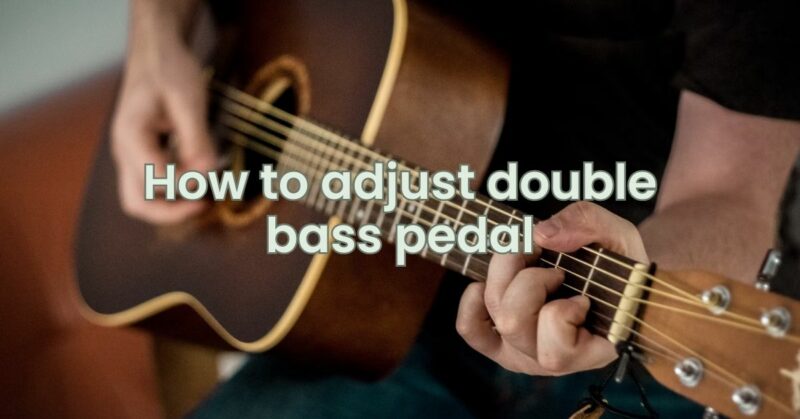The double bass pedal is a dynamic tool that allows drummers to unleash intricate rhythms, powerful beats, and lightning-fast patterns. However, achieving optimal performance requires proper adjustment to suit your playing style, comfort, and technique. In this article, we’ll guide you through the essential steps to adjust your double bass pedal, ensuring that it responds precisely to your footwork and enables you to unleash your drumming potential.
Mastering the Art of Adjustment:
A well-adjusted double bass pedal is your gateway to achieving speed, control, and accuracy in your playing. Whether you’re a beginner or an experienced drummer, the process of adjusting your double bass pedal can greatly enhance your drumming experience.
Steps to Adjust Your Double Bass Pedal:
- Positioning and Angle:
- Place the double bass pedal in front of the bass drum with the connecting bar facing your dominant foot.
- Adjust the angle of the pedals to match your natural foot angle. Experiment with slight adjustments to find your most comfortable position.
- Beater Height:
- Adjust the beater height to ensure it strikes the bass drum head at the desired spot.
- A general guideline is to set the beater around 1-2 inches from the bass drum head. However, personal preference and playing style may vary.
- Spring Tension:
- Adjust the spring tension to control the resistance of the pedal.
- A higher tension provides more power and rebound, while lower tension offers smoother and faster pedal motion.
- Footboard Distance:
- Adjust the distance between the footboard and the bass drum head.
- Find a balance where your foot comfortably rests on the pedal without overextending or straining.
- Chain or Belt Length:
- If your double bass pedal has a chain or belt drive, adjust its length to achieve the desired pedal feel.
- Longer chains/belts offer more power, while shorter ones provide quicker response.
- Linkage Adjustment:
- Ensure that the connecting linkage between the two pedals is balanced and symmetrical.
- Adjust the linkage to match the motion of both pedals, allowing for even strokes between your feet.
- Fine-Tuning and Practice:
- Once you’ve made initial adjustments, spend time playing and practicing to assess the pedal’s responsiveness and comfort.
- Make minor adjustments as needed to achieve the perfect feel and control.
Conclusion: Precision Unleashed
A well-adjusted double bass pedal is your ticket to unlocking a world of rhythmic complexity and drumming mastery. By carefully adjusting the positioning, angle, beater height, spring tension, footboard distance, and linkage of your double bass pedal, you can create a setup that aligns with your unique playing style and technique. Remember that the adjustment process is a dynamic journey, and continuous experimentation and practice will help you fine-tune your pedal to perfection. As you master the art of adjusting your double bass pedal, you’re not just configuring a piece of equipment—you’re crafting a powerful extension of your musical expression and rhythm, allowing you to unleash your drumming potential with precision, power, and passion.


